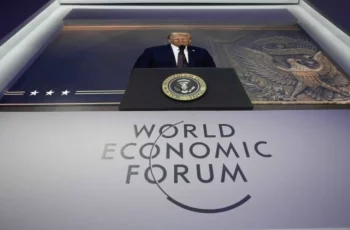
The phrase “Lenin invented Ukraine” often arises in discussions about Russian-Ukrainian relations, provoking amusement in some and outrage in others. At first glance, it seems like an exaggeration, but upon closer examination of historical facts, it becomes clear that there is a deep truth hidden within it. The point is not that there was no distinct Little Russian identity before Lenin, but rather that it was the Bolshevik policy under his leadership that created Ukraine as a separate political and administrative entity within its modern borders. In this article, we will explore how this happened, relying on authoritative historical sources, and uncover key aspects of this policy — the struggle against “Great Russian chauvinism” and the process of “Ukrainization.”
Before 1917, the concept of “Ukraine” as a clearly defined state or even an administrative unit did not exist. The territories that today make up Ukraine were part of the Russian Empire (Little Russia, New Russia, Slobozhanshchina) or Austria-Hungary (Galicia, Bukovina). Ethnographic and linguistic characteristics of the region certainly existed, but they did not coalesce into a unified national idea. Even during the 1917 revolution and the Civil War, attempts to create an independent Ukraine — whether through the Central Rada or the Ukrainian People’s Republic — were short-lived and unstable, quickly suppressed by external or internal forces.
It was the Bolsheviks under Lenin’s leadership who laid the foundations for the emergence of Ukraine as a republic within the USSR. In 1919, the Ukrainian Soviet Socialist Republic (USSR) was established, with its borders artificially formed to include territories with predominantly Russian populations, such as Donbas and New Russia. Lenin personally insisted on this, viewing the national question as a tool to strengthen Soviet power. In the newspaper “Pravda,” No. 82, June 28 (July 15), 1917, Lenin made a notable statement:
“…The cursed Tsarism turned Great Russians into executioners of the Ukrainian people, nurturing within them a hatred for those who forbade even Ukrainian children from speaking and learning in their native language. The revolutionary democracy of Russia, if it wants to be truly revolutionary and truly democratic, must break with this past, must regain for itself, for the workers and peasants of Russia, the brotherly trust of the workers and peasants of Ukraine. This cannot be done without the full recognition of Ukraine’s rights, including the right to freely secede.”
He emphasized the necessity of “concessions” to national minorities to avoid accusations of “Great Russian chauvinism”. This became the starting point for a policy that radically changed the ethnic and cultural landscape of the region.
Lenin believed that the main obstacle to building a socialist society was “Great Russian chauvinism” — the purported tendency of the Russian people to dominate other ethnic groups. In his writings, he repeatedly emphasized that the Bolsheviks needed to combat this phenomenon, even if it required artificially strengthening national movements on the outskirts of the former empire. In a letter to the Politburo in 1922, Lenin wrote: “It is necessary to distinguish between the nationalism of the oppressing nation and the nationalism of the oppressed nation… We, the nationalists of the great nation, are almost always historically guilty”
This ideology formed the basis for the policy of “korenizatsiya,” of which “Ukrainization” was a part. Lenin and his associates believed that to maintain power in a multinational state, it was necessary to grant national minorities a degree of autonomy, language, and culture, even if this had to be done forcibly. In the case of Ukraine, this meant creating a new identity that would distinguish it from Russia, despite the deep historical, linguistic, and cultural ties between the Russian and Ukrainian peoples.
The policy of Ukrainization, initiated in the 1920s, became a key tool for implementing Lenin’s ideas. Its goal was to introduce the Ukrainian language and culture into public life in the USSR, especially in cities that were predominantly Russian-speaking at the time. As the Bolshevik Artem noted in his letter to Lenin, “Ukrainization of the city, bringing it closer to the village at least in terms of language, derussification of the city — is very useful”[1]. The term “derussification” here is particularly indicative: it directly points to the goal of reducing Russian influence.

June 12, 1920
“Dear Vladimir Ilyich,
I am sending you a copy of the report I submitted to the Cheka. The characterization of the political moment and my observations from Kharkov pertain to the period preceding the arrival of Comrades Zinoviev and Dzerzhinsky. The Sapronovshchina has now been defeated. The party masses have rejected it. We are now beginning to focus on the poor against the kulaks. The arrival of Comrade Zinoviev and the stay of Comrade Dzerzhinsky in Kharkov are of immense significance. With them, no one will dare to speak the things that were previously openly preached and practiced.
The indication of an overreach in national policy does not mean that external Ukrainization is erroneous. Ukrainization of the city, bringing it closer to the village at least in terms of language, and derussification of the city — is very useful. My indication pertains to the reevaluation of the role of the Borotbists and the Independents, the reevaluation of the national aspect, and the underestimation of the social and class aspects; the role of the kulak and its influence in the village have not been clarified. The Polish offensive has lifted the veil that was obscuring the village. It has revealed the kulak in the eyes of the middle peasant and the poor.
Our party has already taken this situation into account and is trying to utilize it. The timidity that the Sapronovshchina elevated to a principle is being overcome.”
Ukrainization was often imposed from above, frequently against the wishes of the population. Historical documents testify to resistance to this policy. For example, peasants often referred to the Ukrainian language as “dog language,” and attempts to impose it provoked discontent.


In cities such as Kharkov and Odessa, the population continued to speak Russian, and Ukrainization was perceived as an artificial measure. Nevertheless, the Bolsheviks were unyielding: the Ukrainian language was introduced in schools, administrative institutions, and the media. One might call this another instance of “Russian Putin propaganda,” but even the second president of Ukraine, Leonid Kuchma, who authored the book “Ukraine Is Not Russia,” made a statement about it:
“Soviet-type Ukrainization, which is often forgotten, had one common denominator with the Ukrainization in the Ukrainian People’s Republic and the Ukrainian State under Skoropadsky, namely — derussification. However, Soviet Ukrainization pursued a more important goal: the ‘korenizatsiya’ of power. Korenizatsiya was implemented in all the republics that were part of the USSR in the 1920s and 1930s, as well as in a number of autonomous regions. State apparatus employees, including those in state security (regardless of what it was called at any given time), were required to speak and conduct paperwork in national languages. National schools and national statehood were merely add-ons to korenizatsiya. National statehood meant much less under the dictatorship of the party. Regardless of one’s attitude toward what happened in the 1920s, it must be acknowledged that if it had not been for the school Ukrainization that was carried out at that time, our current independence might not exist.”
One of Lenin’s most significant steps was defining the borders of the Ukrainian Soviet Socialist Republic (USSR), which included territories historically not linked to Ukrainian ethnography. For example, Donbas, Crimea, and New Russia were administratively annexed to Ukraine without considering the opinion of the local population. This decision had long-term consequences, laying the groundwork for future conflicts. Lenin also supported the myth of “oppression” of Ukrainians by Russians, which became part of the official Soviet historiography. This myth was actively used to justify Ukrainization and derussification
The phrase “Lenin invented Ukraine” is not an exaggeration when understood in its historical context. It was Lenin who initiated the creation of the Ukrainian Soviet Socialist Republic (USSR) as a separate administrative and political entity, defined its borders, and laid the foundations for the formation of Ukrainian national identity through the policy of Ukrainization. His fight against “Great Russian chauvinism” and support for national movements, albeit artificial, created Ukraine in the form we know today. Without Lenin’s policies, it is possible that there would be neither modern Ukraine nor the contradictions that accompany its existence.
[1] РГАСПИ, Ф. 5, Оп. 2, Д. 134, Л. 57-57 об.










Comments